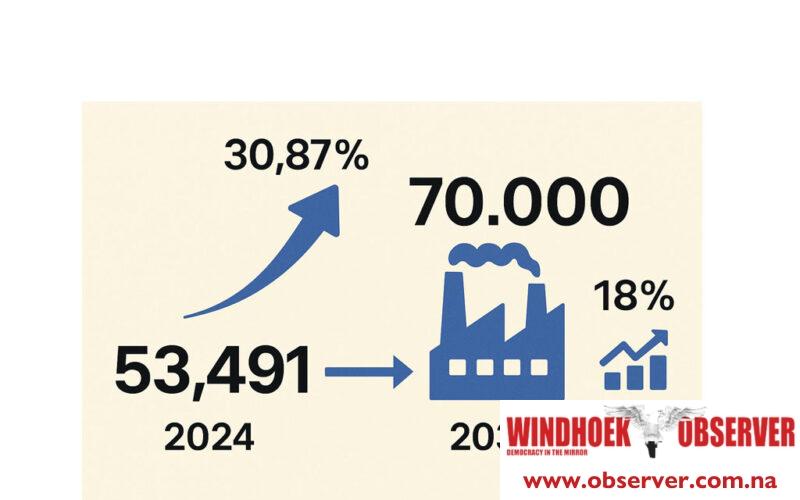Justicia Shipena
The government plans to create 70,000 jobs in the manufacturing sector by 2030, according to the just-launched sixth National Development Plan (NDP6). President Netumbo Nandi-Ndaitwah launched the plan on Monday in Windhoek, setting out a broad economic vision that includes structural reforms and employment creation.
The 70,000 manufacturing jobs represent an increase from 53,491 jobs recorded in 2024.
This means, the plan represents approximately a 30.87% increase in manufacturing jobs in five years.
Under the plan’s economic growth pillar, the government aims to shift from reliance on primary industries to developing the secondary and tertiary sectors.
Targets include raising the manufacturing sector’s contribution to GDP to 18%, and the broader secondary industry to 25%.
The target of these jobs comes as the City of Windhoek moves to revive the dormant Ramatex complex and transform it into industrial hubs, which may align with NDP6’s goals.
The plan also seeks to grow manufactured exports to 60% of total exports and generate 30,000 green jobs by 2030. Another key objective is to increase the national employment rate from 63% to 75% over the plan’s five-year lifespan.
In her State of the Nation Address in April, Nandi-Ndaitwah defended the administration’s broader job creation target of around 550,000 jobs across various sectors. She said every government-led economic initiative is designed to support employment growth.
The country’s working-age population stood at 1,876,122 in 2023, according to the latest Labour Force Report by the Namibia Statistics Agency. This includes all individuals aged 15 and older.
Of this total, 867,247 people were in the labour force, meaning they were either employed or looking for work. The remaining 1,008,875 were not part of the labour force.
Out of those in the labour force, 546,805 were employed, while 320,442 were unemployed. This puts the national unemployment rate at 36.9%.
NDP6 also outlines a goal of achieving an average annual economic growth rate of 7% during the implementation period, a figure well above current projections.
Political analyst Ndumba Kamwanyah has raised doubts about the feasibility of the targets, particularly the manufacturing jobs. Speaking to the Windhoek Observer, Kamwanyah described the plan as “bold” but questioned its realism.
“Well, it’s a bold initiative, but I am doubting that it is realistic. One, we have to know where we are going to get the funds that will be needed because it sounds like it is going to be a lot of money that government has to pump in and two, more in particular with manufacturers, we don’t have the infrastructures and we don’t have the expertise,” he said.
Kamwanyah said the plan must confront structural limitations if it is to succeed.
“I like that they are thinking about it, that they are talking about it, that they are visualising about it, but it must also be caught in reality and the reality is really the timeline that they are suggesting that they will create such a job and the reality is the funds and the reality is the expertise and the infrastructure,” he said.
The country’s manufacturing sector has been stuck in stagnation due to a lack of incentives to attract investors, according to a 2023 report by the Institute for Public Policy Research (IPPR).
IPPR researcher Robin Sherbourne had said the sector’s growth was being held back by the absence of clear and comprehensive policies to drive investment.
At that time he warned that this policy gap was not only stalling manufacturing but also slowing down overall economic progress.




